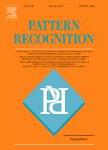版权所有:内蒙古大学图书馆 技术提供:维普资讯• 智图
内蒙古自治区呼和浩特市赛罕区大学西街235号 邮编: 010021

作者机构:Xi An Jiao Tong Univ Xian Shaanxi Peoples R China Brunel Univ London London England SUNY Buffalo Buffalo NY 14214 USA
出 版 物:《PATTERN RECOGNITION》 (图形识别)
年 卷 期:2020年第100卷
页 面:107166-107166页
核心收录:
学科分类:0808[工学-电气工程] 08[工学] 0812[工学-计算机科学与技术(可授工学、理学学位)]
主 题:Variational autoencoder Mutual information Generative model
摘 要:In the field of machine learning, it is still a critical issue to identify and supervise the learned representation without manually intervening or intuition assistance to extract useful knowledge or serve for the downstream tasks. In this work, we focus on supervising the influential factors extracted by the variational autoencoder (VAE). The VAE is proposed to learn independent low dimension representation while facing the problem that sometimes pre-set factors are ignored. We argue that the mutual information of the input and each learned factor of the representation plays a necessary indicator of discovering the influential factors. We find the VAE objective inclines to induce mutual information sparsity in factor dimension over the data intrinsic dimension and therefore result in some non-influential factors whose function on data reconstruction could be ignored. We show mutual information also influences the lower bound of VAE s reconstruction error and downstream classification task. To make such indicator applicable, we design an algorithm for calculating the mutual information for VAE and prove its consistency. Experimental results on MNIST, CelebA and DEAP datasets show that mutual information can help determine influential factors, of which some are interpretable and can be used to further generation and classification tasks, and help discover the variant that connects with emotion on DEAP dataset. (C) 2019 Elsevier Ltd. All rights reserved.